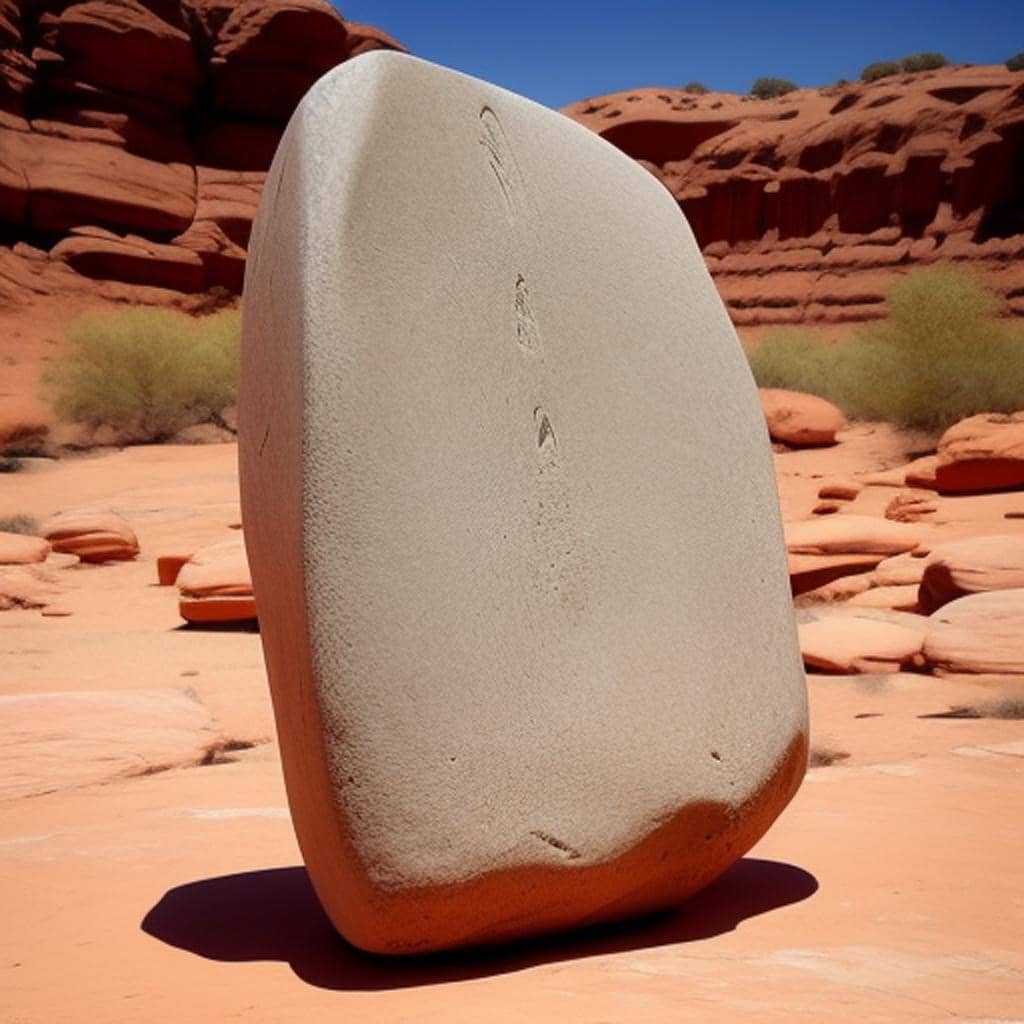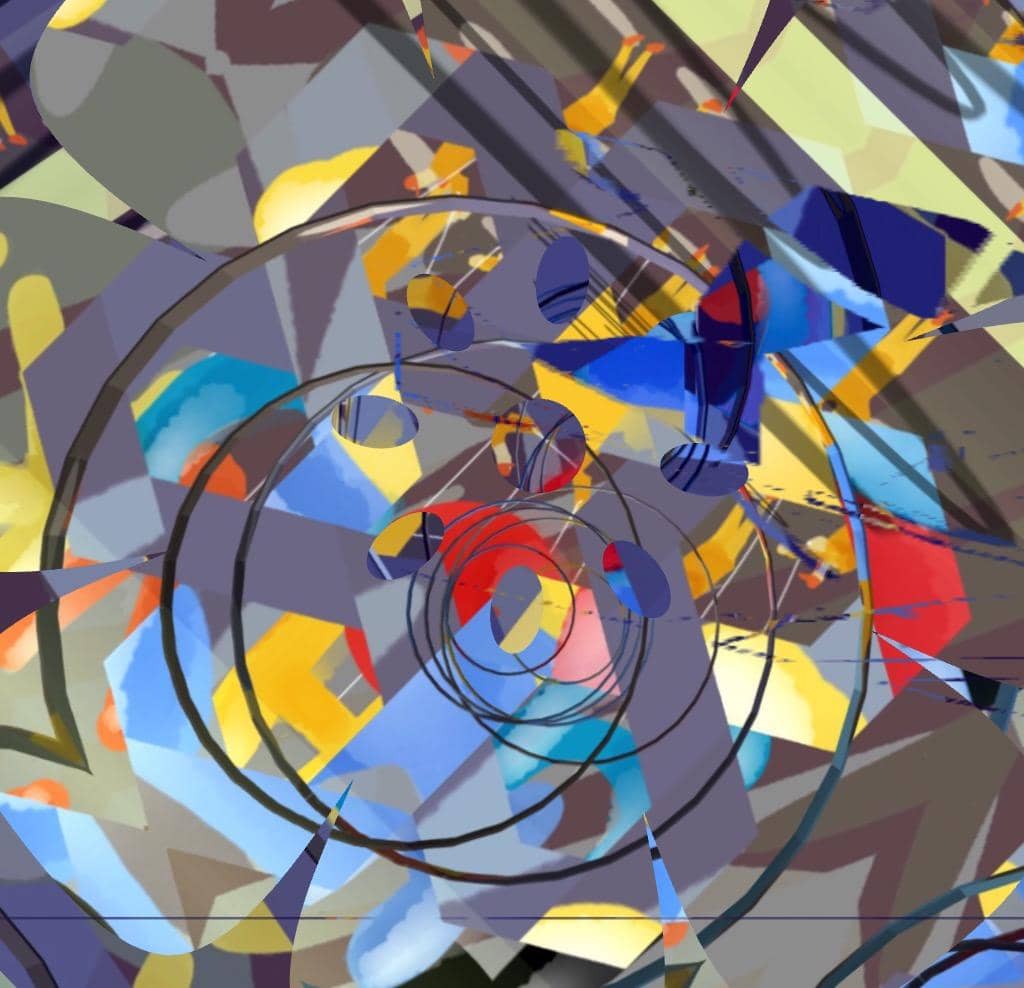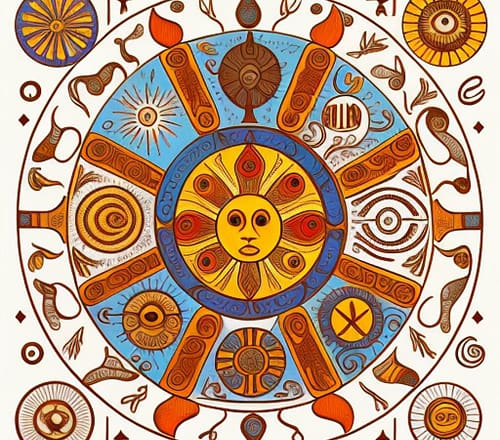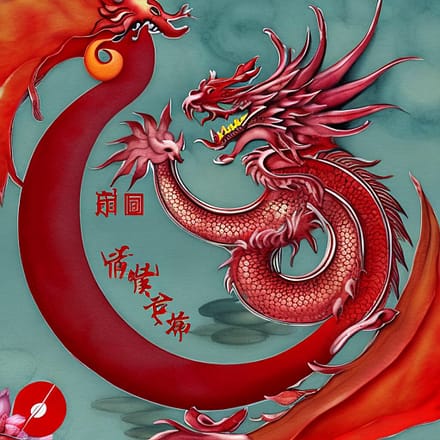
Table of Contents
The history of the MOABITE stone
The Moabite Stone, also known as the Mesha Stele, is an ancient artifact that provides important insights into the history and culture of the Moabite kingdom. Here’s a brief overview of its history:
Discovery: The Moabite Stone was discovered in 1868 in Dhiban (present-day Jordan) by a German missionary named Frederick Augustus Klein. It was found among the ruins of the ancient city of Dibon, which was the capital of the Moabite kingdom.
Creation and Inscription: The stone itself is a large basalt slab measuring about 1.15 meters (3.8 feet) in height. It was created in the 9th century BCE, during the reign of King Mesha of Moab. The stone bears an inscription, written in the Moabite language using a script similar to ancient Hebrew.
Content and Meaning: The inscription on the Moabite Stone recounts the victories and achievements of King Mesha, who ruled over the Moabite kingdom. It describes his rebellion against the northern kingdom of Israel, which had controlled Moab for some time. According to the inscription, Mesha successfully regained Moabite independence by defeating the Israelite forces and capturing several cities. The text also includes references to the Moabite god Chemosh and provides insights into religious practices and customs of the time.
Importance: The Moabite Stone is highly significant for biblical archaeology and the study of ancient Near Eastern history. It is one of the earliest known examples of a monumental inscription from the region and provides valuable historical and cultural information about the Moabites, a people often mentioned in biblical texts. The inscription corroborates certain events and figures mentioned in the Hebrew Bible, providing an external historical reference for the biblical account.
Controversy and Damage: After its discovery, the Moabite Stone was initially in the possession of the Ottoman Empire, but it was later acquired by the French and displayed at the Louvre Museum in Paris. During World War I, the stone was damaged when a bomb exploded near the museum, resulting in several cracks. Today, the Moabite Stone is displayed at the Jordan Archaeological Museum in Amman, Jordan, while a replica is exhibited at the Louvre.
In conclusion: the Moabite Stone, or Mesha Stele, is an ancient artifact that dates back to the 9th century BCE and provides valuable historical and cultural information about the Moabite kingdom and its ruler, King Mesha. Its inscription sheds light on the relations between Moab and Israel, as well as religious practices and customs of the time.
The full text of the inscription on the Moabite stone
Here is a translation of the inscription on the Moabite Stone, although it should be noted that there are some gaps and uncertainties in the text:
- “I am Mesha, son of Chemosh-[…], king of Moab, the Dibonite. My father reigned over Moab thirty years, and I reigned after my father.”
- “And I made this high place for Chemosh in Qarhoh, a sanctuary of salvation, for he saved me from all oppressors, and made me see my desire upon all my enemies.”
- “Omri was king of Israel, and he oppressed Moab for many days, because Chemosh was angry with his land.”
- “And his son succeeded him, and he too said, ‘I will oppress Moab!’ In my days he spoke thus. But I looked down on him and on his house, and Israel has been defeated. It has been defeated forever.”
- “Omri took possession of the land of Medeba, and he lived in it during his days and half the days of his son, forty years, but Chemosh returned it in my days.”
- “And I built Baal Meon, and made in it a water reservoir. And I built Qiryaten. The men of Gad lived in the land of Ataroth from ancient times, and the king of Israel fortified Ataroth.”
- “I attacked the town and killed all the people: the town was a tribute for Dibon. I built Qarhoh, the wall of the woods and the wall of the acropolis. I built its gates, and I built its towers. I built the king’s house, and I made the double reservoir for the spring within the city. But there was no cistern in the city of Qarhoh, and I said to all the people: ‘Make every man a cistern in his house.'”
- “And I dug the ditches for Qarhoh with prisoners of Israel. I built Aroer, and I made the road across the Arnon. I built Beth-Bamoth, because it was destroyed. I built Bezer, because it was in ruins.”
- “And the chiefs of Dibon were fifty, for all Dibon was obedient. And I ruled hundreds in the towns which I had added to the land. I built Medeba, Beth-Diblathen, and Beth-Baal-Meon, and I brought there the flocks of the land.”
- “And as for Horonaim, there lived in it the offspring of Gad from ancient times, but I had occupied it. I fought against the city and captured it. And Chemosh restored it in my days.”
- “And I built Qarhoh, the wall of the woods and the wall of the acropolis. I built its gates, and I built its towers. I built the king’s house, and I made the double reservoir for the spring within the city. But there was no cistern in the city of Qarhoh, and I said to all the people: ‘Make every man a cistern in his house.'”
- “And I built the wall of the acropolis, and I built its gates, and I built its towers. And I built the king’s house, and I made the double reservoir for the spring within the city. But there was no cistern in the city of Qarhoh, and I said to all the people: ‘Make every man a cistern in his house.'”
- “And Chemosh said to me, ‘Go, take Nebo against Israel!’ And I went by night and fought against it from the daybreak until midday, and I took it and I killed it, and I killed it all for the sake of Chemosh, my god.”
- “And I took from there the [vessels] of Yahweh, and I presented them before the face of Chemosh.”
- “And the king of Israel built Jahaz, and he dwelt in it while fighting against me, but Chemosh drove him out before my face. And I took from Moab two hundred men, all the chiefs, and I led them against Jahaz and took it in order to add it to Dibon.”
- “I built Qarhoh, the wall of the woods and the wall of the acropolis. I built its gates, and I built its towers. I built the king’s house, and I made the double reservoir for the spring within the city. But there was no cistern in the city of Qarhoh, and I said to all the people: ‘Make every man a cistern in his house.'”
- [Fragmented text]
- “And Horonaim was saved from destruction because of [Chemosh], and I dwelt in it while I fought against [?].”
- [Fragmented text]
- “[…] the cities of the land […].”
- “[…] built […]”
- “[…] and I built […]”
- Unfortunately, the end of the inscription on the Moabite Stone is fragmented and incomplete, which makes it difficult to provide a complete translation beyond what has been shared. The damaged portions of the stone have resulted in missing sections of the text, leaving gaps in our understanding of the inscription’s full content
Please note that this is a translation of the inscription, and the original text is in the Moabite language using a script similar to ancient Hebrew.
Events mentioned in the Moabite Stone inscription referenced in the Bible
The events mentioned in the Moabite Stone inscription are also referenced in the Bible. The relevant passage can be found in the Book of 2 Kings, specifically in 2 Kings 3:4-27. Here is an excerpt from the Bible that relates to the events described in the Moabite Stone:
2 Kings 3:4-5
“Now Mesha king of Moab was a sheep breeder, and he had to deliver to the king of Israel 100,000 lambs and the wool of 100,000 rams. But when Ahab died, the king of Moab rebelled against the king of Israel.“
The subsequent verses describe the alliance between the kings of Israel, Judah, and Edom to confront the Moabite rebellion and their military campaign against Moab. While the Moabite Stone provides an inscription from the perspective of the Moabite king, the biblical account offers a different perspective from the Israelite side.
It’s important to note that the Moabite Stone and the biblical account offer different perspectives on the same historical events. They provide complementary sources of information that help researchers and scholars gain a more comprehensive understanding of the historical context.
Comparison table highlighting some key aspects of the Moabite Stone inscription and the related biblical account
| Aspect | Moabite Stone Inscription | Biblical Account (2 Kings 3:4-27) |
| Author | King Mesha of Moab | Anonymous author, likely a compiler of historical records |
| Perspective | Moabite | Israelite |
| Historical Context | Moabite rebellion against the king of Israel | Moabite rebellion against the king of Israel |
| Description of Events | Mesha’s victories and achievements, conquest of cities | Alliance formed by kings of Israel, Judah, and Edom |
| Mentioned Figures | King Mesha, Omri (king of Israel), Chemosh (Moabite god) | King Mesha, Ahab (previous king of Israel) |
| Military Campaign | Mesha’s successful military actions against Israelites | Israelite campaign against Moabite rebellion |
| Religious References | References to Moabite god Chemosh | No explicit religious references |
The table provides a general comparison and may not include every detail or nuance from the Moabite Stone inscription and the biblical account. However, it highlights some key similarities and differences between the two sources regarding the historical events involving Moab and Israel during that time.
Convergences between the Moabite Stone inscription and the biblical account in 2 Kings 3
While the Moabite Stone inscription and the biblical account in 2 Kings 3 offer different perspectives, there are several convergences between the two texts:
Rebellion of Moab
Both the Moabite Stone and the Bible agree that there was a rebellion by the Moabites against the king of Israel. The Moabite Stone attributes this rebellion to King Mesha, while the Bible mentions the Moabite rebellion following the death of King Ahab.
Conflict and Warfare
Both sources describe military engagements between the Moabites and the Israelites. The Moabite Stone emphasizes the victories and conquests of King Mesha, while the biblical account in 2 Kings 3 describes a military campaign by the kings of Israel, Judah, and Edom against Moab.
Capturing of Cities
The Moabite Stone inscription refers to the capturing and fortification of various cities by King Mesha, while the Bible mentions the Israelite alliance capturing and besieging Moabite cities.
Religious References
Both texts make references to the Moabite god Chemosh. The Moabite Stone credits Chemosh with providing victory and salvation to King Mesha, while the Bible acknowledges the existence of Chemosh as a foreign deity worshiped by the Moabites.
These convergences highlight the shared historical context and some overlapping details between the Moabite Stone inscription and the biblical account, providing additional perspectives on the events that took place during that period.
Summary of the convergences between the Moabite Stone inscription and the biblical account in 2 Kings 3
| Aspect | Convergence |
| Rebellion of Moab | Both sources agree on a Moabite rebellion |
| Conflict and Warfare | Both mention military engagements between Moab and Israel |
| Capturing of Cities | Both refer to the capturing and fortification of cities |
| Religious References | Both acknowledge the Moabite god Chemosh |
These convergences indicate shared historical events and themes between the Moabite Stone inscription and the biblical account. While they may have different perspectives and emphasize different details, these similarities help corroborate certain aspects of the historical context surrounding Moab and Israel during that time.
What would have been the vessels of the Lord in this paricular case as mentionned by King Mesha
In the Moabite Stone inscription, King Mesha mentions taking the “vessels of Yahweh” and presenting them before the face of Chemosh, his god. The specific nature of these vessels is not explicitly described in the inscription itself, leaving some room for interpretation and speculation.
Based on historical and cultural context, it is likely that the “vessels of Yahweh” refers to sacred objects or items associated with the worship of Yahweh, the God of Israel. These could include ritual objects used in the religious practices of the Israelites, such as ceremonial vessels, utensils, or possibly even sacred artifacts housed in a temple or sanctuary.
It’s important to note that the biblical account does not mention the Moabites taking vessels from Yahweh. The reference to the vessels of Yahweh in the Moabite Stone inscription might represent a claim by King Mesha to have taken spoils or symbolic objects associated with Israelite religious practices during his conquests. However, without further information or archaeological evidence, the exact nature and significance of these vessels remains uncertain.
Kir-hareseth (also known as Kir of Moab), prevailing place of worship of Chemosh during the time of King Mesha
During the time of King Mesha and the events described in the Moabite Stone inscription (9th century BCE), the prevailing place of worship for the Moabite god Chemosh would have been the city of Kir-hareseth (also known as Kir of Moab). Kir-hareseth is mentioned in the Bible in relation to the Moabite rebellion against Israel in 2 Kings 3:25.
According to the biblical account, when the Israelite alliance besieged the city of Kir-hareseth, King Mesha of Moab, in a desperate act, offered his eldest son as a burnt offering on the city wall, which greatly distressed the Israelite forces. This event signifies the significance of Kir-hareseth as a major religious center and the primary place of worship for Chemosh during that time.
Additionally, the Moabite Stone itself mentions the construction of a sanctuary by King Mesha in Qarhoh (interpreted as the city of Kir-hareseth). This sanctuary was dedicated to Chemosh and described as a “sanctuary of salvation.” The presence of this sanctuary indicates the importance of Kir-hareseth as a religious center for the worship of Chemosh.
It’s worth noting that apart from the Moabite Stone and the biblical account, other archaeological evidence from the region, such as inscriptions and temple remains, could further support our understanding of the prevailing place of worship of Chemosh during that time.
The worship of Chemosh
The worship of Chemosh was a significant aspect of the religious practices of the Moabites, as mentioned in the Moabite Stone inscription. While the precise details of Moabite religious rituals and beliefs are not extensively documented, some general information can be gathered from various sources, including the Bible and archaeological findings:
Deity
Chemosh was considered the chief god of the Moabite pantheon, representing the national deity of the Moabite people. Chemosh was believed to be the patron god of Moab and was associated with fertility, victory in battle, and protection.
Sacrificial Offerings
Like many ancient Near Eastern religions, the worship of Chemosh likely involved offerings and sacrifices. These offerings might have included animal sacrifices, grain offerings, and possibly even human sacrifices, although the latter is not explicitly mentioned in the Moabite Stone or other sources.
Rituals and Ceremonies
Specific rituals and ceremonies performed in the worship of Chemosh are not extensively described. However, it is reasonable to assume that the Moabites conducted religious ceremonies and rites at dedicated sanctuaries or high places. These ceremonies may have involved prayers, chants, music, and other forms of worship.
Sacred Spaces
The Moabite Stone inscription mentions the construction of a sanctuary dedicated to Chemosh in Qarhoh (possibly Kir-hareseth), emphasizing the importance of physical structures in Moabite religious practices. Archaeological evidence suggests that temples or sanctuaries were important focal points for religious activities.
Divine Communication
Like other ancient religions, the Moabites likely sought to communicate with their deity. This could have been achieved through various means, such as divination, dreams, oracles, or consultations with priests or prophets who served as intermediaries between the people and the divine.
It is important to note that our understanding of Moabite religious practices is limited, and much of the knowledge we have is derived from fragmentary sources and archaeological remains. The Moabite Stone provides valuable but limited insights into the worship of Chemosh.
Similarities between the worship of Chemosh and other known religious practices of deities in the ancient Near East
There are certain similarities between the worship of Chemosh and other known religious practices of deities in the ancient Near East during that time period. Some of these similarities include:
Pantheon of Deities
Like many ancient civilizations, the Moabites had a pantheon of gods and goddesses, with Chemosh as the chief deity. This is a common feature in polytheistic belief systems of the ancient Near East.
Sacrificial Offerings
The practice of offering sacrifices to appease or honor deities was widespread in the ancient Near East. Animal sacrifices, grain offerings, and possibly even human sacrifices were conducted in various religious traditions, including the worship of Chemosh.
Rituals and Ceremonies
Ancient religious practices often involved rituals, ceremonies, and communal gatherings. These could include processions, prayers, chants, music, and other forms of worship. While specific details of Moabite rituals are not well-documented, the general framework likely shared similarities with contemporary practices in the region.
Sacred Spaces
The construction and use of temples, sanctuaries, or high places as dedicated spaces for religious activities were common across different ancient Near Eastern cultures. The Moabite Stone inscription mentions the construction of a sanctuary for Chemosh, highlighting the importance of such spaces in Moabite religious practices.
Divine Communication
Seeking communication with the divine was a central aspect of ancient religious practices. This could involve divination, dreams, oracles, and consultations with priests or prophets who acted as intermediaries between the people and the deities. While the specific methods used by the Moabites are not extensively described, they likely shared similarities with the practices of neighboring cultures.
These similarities reflect the broader cultural and religious milieu of the ancient Near East during that time, where various societies had interconnected religious beliefs and practices. However, it is also important to recognize that each culture had its unique religious traditions and interpretations of their deities.
Examples of other deities and their associated cults that were prominent in the ancient Near East during the same time period as the worship of Chemosh
Here are some examples of other deities and their associated cults that were prominent in the ancient Near East during the same time period as the worship of Chemosh:
Baal
Baal was a widely worshiped deity in the Canaanite and Phoenician religions. He was considered a storm god associated with fertility, agriculture, and the forces of nature. Baal had various local manifestations and cult centers throughout the region.
Asherah
Asherah was a goddess who was often associated with fertility, motherhood, and nurturing. She was considered the consort of the chief deity, whether it was Baal, El, or Yahweh, depending on the specific cultural context.
El
El was a major deity in Canaanite and West Semitic religions. He was often referred to as the father of the gods and was associated with kingship, justice, and wisdom.
Astarte/Ishtar
Astarte or Ishtar was a goddess worshiped in various forms across the ancient Near East, particularly in Mesopotamia and Canaan. She was associated with love, beauty, fertility, and war, and her worship involved elaborate rituals and festivals.
Marduk
Marduk was the chief god of Babylon and the patron deity of the Babylonian empire. He was considered a powerful god of creation, wisdom, and justice, and his cult played a significant role in the religious and political life of Babylon.
Amun-Ra
Amun-Ra was a deity in ancient Egyptian religion who represented the combination of the sun god Ra and the air god Amun. He was revered as the supreme deity, associated with creation, kingship, and fertility.
These are just a few examples of the many deities worshiped in the ancient Near East during that time period. Each deity had its own cult practices, rituals, and cultural significance within their respective societies. The interconnectedness and diversity of religious beliefs and practices in the ancient Near East were influenced by cultural exchanges, regional trade, and the blending of local traditions.
Comparison table highlighting some key deities and their associated cults in the ancient Near East
| Deity | Associated Cults | Main Attributes |
| Chemosh | Moabite religion | Chief god of Moab, associated with victory, protection, and fertility |
| Baal | Canaanite and Phoenician religions | Storm god, associated with fertility, agriculture, and nature |
| Asherah | Canaanite and West Semitic religions | Goddess associated with fertility, motherhood, and nurturing |
| El | Canaanite and West Semitic religions | Father of the gods, associated with kingship, justice, and wisdom |
| Astarte/Ishtar | Canaanite, Phoenician, and Mesopotamian religions | Goddess associated with love, beauty, fertility, and war |
| Marduk | Babylonian religion | Chief god of Babylon, associated with creation, wisdom, and justice |
| Amun-Ra | Ancient Egyptian religion | Combined deity of the sun god Ra and air god Amun, associated with creation, kingship, and fertility |
This table provides a brief overview of some key deities and their associated cults in the ancient Near East. Each deity had its own unique characteristics and played a significant role within its respective religious traditions. It’s important to note that these deities were worshiped across different regions and cultures, and their specific attributes and cult practices could vary to some extent.
Shop Corner
Moabite stone on amazon
Thank you for reading, shares and comments 👍
Sources openai Language models, aitrot, picsart and mib
Embark on a journey into the realm of affiliate marketing and craft your own website within a vibrant, supportive community. Join me in this adventure, where you can begin as a free starter and stay as long as you desire. Enjoy complimentary hosting and foundational teachings to set you on your path. For those with advanced skills, opportunities to elevate your expertise await. Take a moment to explore and witness the magic for yourself!




